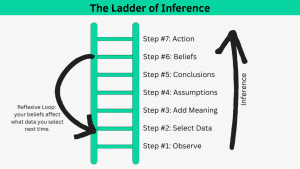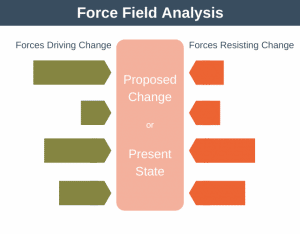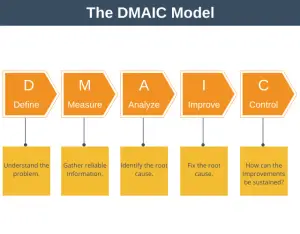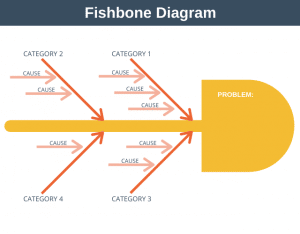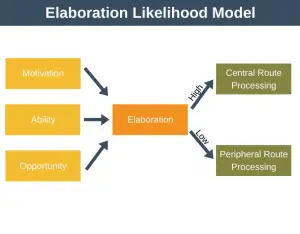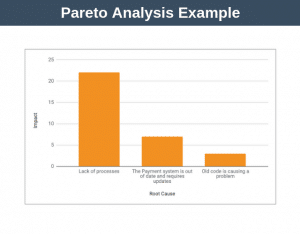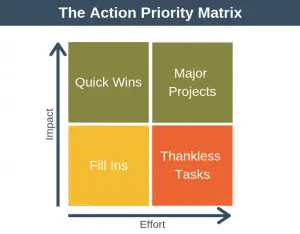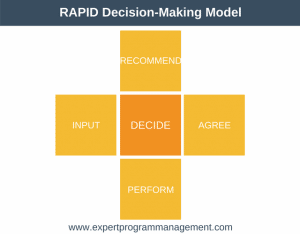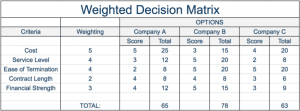The Kano model is a Six Sigma tool that can help put your customers front and center of your product development.
Imagine this scenario: You are the product manager for a software tool and you’re trying to determine what features to build in the next quarter.
You have a huge list of features you want to build but don’t have the time or budget to build them all. You need to decide what features you are going to prioritize, but how?
You could get your team together to brainstorm what to prioritize, or you could survey your customers. These two approaches will generate lots of options and opinions. Making things more complicated is the fact that not all customers are equal and many customers may not be able to articulate or know what they want. The big question for you as a product manager then is how do you decipher this into something you can use?
This is where the Kano model comes in. It helps you prioritize a feature based on how much that feature will delight your customers. Putting your customers front and center in this way gives your product the best chance of being successful in the market.
Background
Dr. Noriaki Kano, a professor of quality management from Tokyo University, created the Kano Model in the 1980s. He developed the Kano Model while researching the factors that contribute to customer satisfaction and loyalty.
The model identifies that features of products can be divided into different classes based on their relationship to satisfaction. If a customer experiences a high level of satisfaction, they can become excited and get great pleasure or delight.
Kano theorized that a customer’s perception of satisfaction changes over time. Features that bring delight now will later become features that customers expect, and so to maintain customer satisfaction, a product developer must continue to evolve.
The Kano model is often used in Six Sigma, as part of the define phase of the DMAIC process.
The Kano Model – How it works
The Kano model works by understanding each feature you want to develop based on two axes.
On the x-axis, we have whether the feature is absent or present within your product or service. On the y-axis we have how we expect the customer to respond to the feature – were they dissatisfied or delighted by the feature.
The next thing the model does is to break this diagram into categories of features: Must-have features, performance features, delight features, indifferent features, and reverse features.
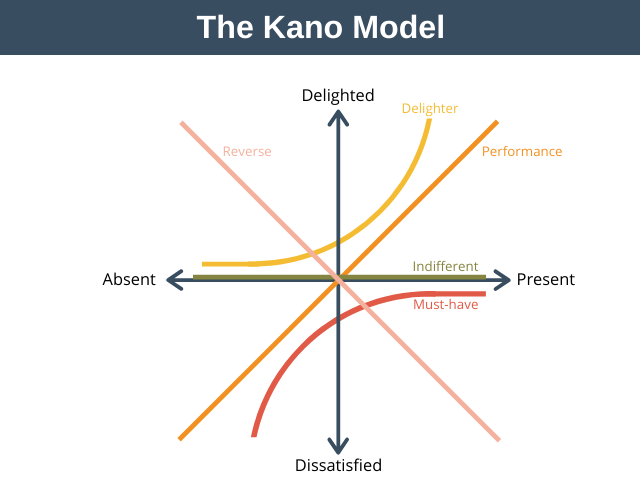
Let’s dig a little deeper into each of these categories of features.
1. Must-Have Features
Must-haves are the features that customers expect as part of the product or service.
These represent your customer’s basic requirements. If they are present your customer won’t be delighted in any way, they’ll be neutral to them, but if even one must-have feature is absent then your customer will be very dissatisfied.
As an example, imagine arriving at a hotel room and locking the door behind you as you enter. If you lock the door successfully then you don’t really think about it, it’s just what you expect. But if you arrived to find your room had no door lock you’d be absolutely horrified and dissatisfied.
Put simply, your product or service must have all must-have features or your customer will be dissatisfied. However, having all the must-have features will not delight your customer. You can see this on the diagram because the red must-have line never goes above the horizontal x-axis. Your product must contain these features, you don’t have any choice.
2. Performance Features
These are features that the more a customer gets of them the more satisfied they are. They are called performance features because they are considered to improve the performance of your product in some way.
Performance features have qualities like cost, entertainment, ease of use, or security. These are the type of features that customers appraise when assessing whether a product suits their needs. These features result in satisfaction if present and dissatisfaction when they are not.
The straight orange performance line on the diagram shows that for every increase in functionality, there is a proportional increase in satisfaction.
Returning to our hotel example, performance features might include things such as a bigger bed, a bigger TV, or triple-glazing to remove outside noise.
3. Delight Features
These are features that your customer doesn’t expect but they make your customer delighted if they are present.
Delight features are represented by the yellow “delighter” line in the diagram. If these features are absent then the customer is neutral about it (the line never goes below the x-axis line), but if they are present then the customer is extremely happy.
For our hotel example, this might mean getting a room upgrade when you check-in or finding some champagne and flowers in your room.
4. Indifferent Features
These are represented by the green line that runs along the x-axis. Indifferent features are ones the customer doesn’t care about – whether they are present or absent your user just doesn’t care.
In our hotel that might be something like having a rug in your room. If it’s absent you maybe don’t even notice you don’t have one, and if it’s present you don’t really notice it either.
5. Reverse Features
These features actually annoy your customer if they are present but make your customer happy when not there. They are represented by the salmon-colored line in the diagram.
Returning for a final time to our hotel example, when you visit the hotel restaurant for breakfast then having to queue before you can be seated is annoying. Far better would be to simply be able to walk in and choose a table. The server could then ask any questions they have after you’ve sat down.
An Extra Dimension of Features – Habituation
How your customer feels about a feature can change over time as customers become habituated to a feature. This is known as the habitation effect.
Delighting features can become performance features and eventually must-have features.
For example, in the 1960s your customer might have been delighted to find a TV in their hotel room. In the 1970s, this would have been a performance feature, but these days it’s considered a must-have requirement.
How to Use the Kano model
To use the Kano model follow the steps outlined below. Make sure you involve your customer in all of the steps.
Step 1 – Select the Features to Consider
Create a list of all the features you have under consideration to implement. This list of features could come from many sources, including:
- Your backlog.
- Requests from customers.
- Customer complaints.
- Management.
- Team brainstorming.
- Customer questionnaires.
Step 2 – Survey your Customers
In this step, you ask our customers how they feel about each of the features you’ve identified.
For each feature, Kano proposed you survey each of your customers about each feature in a standardized way using two questions. The first question is asked in a positive way (functional) and the second question is asked in a negative way (dysfunctional).
| I like it | I expect it | I am neutral | I can tolerate it | I dislike it | |
| Functional: How would you feel if the product had [FEATURE]? | |||||
| Dysfunctional: How would you feel if the product did not have [FEATURE]? |
It’s important to survey multiple customers as this will give you more accurate results than simply surveying one or two customers.
Step 3: Categorize each Answer
Based on the answers given by one customer for a feature you can identify how they view the feature using the table below:
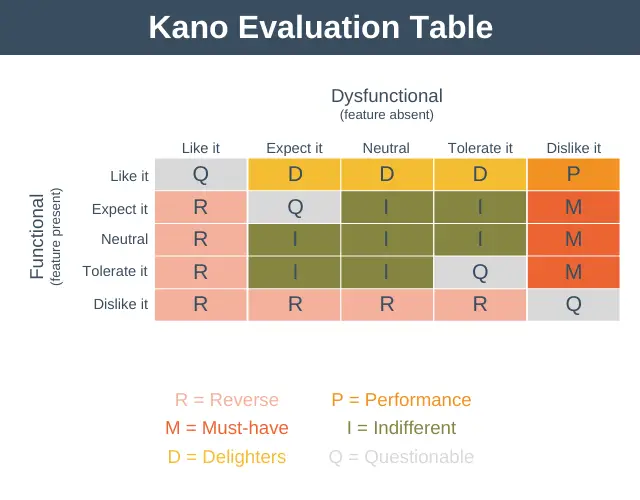
To use this table you take the customer’s answer to your functional question, and their answer to your dysfunctional question, to determine how that customer categorizes that feature.
For example, if your customer expected a feature to be present and would dislike it if that feature was absent then the feature is a must-have feature. If your customer would like a feature to be present but could tolerate it if the feature wasn’t there then that feature is a “delighter” feature.
Note that there is one category in this table that we haven’t covered so far – questionable features. These are features that you cannot determine a category for as your customer has given conflicting answers.
Step 4: Collate your Data
Based on the answers provided by all customers surveyed you’ll be able to understand how they view the features you have under consideration.
For example, suppose you are considering implementing five features and you surveyed 10 customers, your data might look something like this.
| Feature Name: | Delighter | Performance | Must-have | Indifferent | Reverse |
| Feature 1 | 7 | 3 | 0 | 0 | 0 |
| Feature 2 | 0 | 8 | 1 | 1 | 0 |
| Feature 3 | 0 | 1 | 9 | 0 | 0 |
| Feature 4 | 0 | 0 | 10 | 0 | 0 |
| Feature 5 | 0 | 0 | 1 | 8 | 1 |
Step 5: Prioritize the Features you will Deliver
The final step of the Kano model process is to determine which features you will deliver.
This begins by committing to deliver the must-have features first. Your customer expects these and will be disappointed if they’re not present so you have no choice but to build them. In our example, you can see that features 3 and 4 are must-haves.
Next, take a look at your performance features. Try to include as many as you can.
Next, try to include your features that will add delight. If necessary, cut out some of your performance features so you can include some delighters. From our example, this would mean scheduling features 2 and 1 next, time permitting.
The next thing to do is remove any reverse features if you have any. There are no reverse features in our example.
Finally, all indifferent features can be ignored as they deliver no value to your customer.
Advantages and Disadvantages
The benefits of using the Kano Model include:
- It helps organizations understand their customer’s needs better than their customer’s understand their own needs.
- It helps you put customer’s front and center by delivering features in the order that your customers most want them.
- It works well in trade-off situations. It allows you to chose the feature with the biggest impact on customer satisfaction when resources are scarce.
The disadvantages of using the Kano Model include:
- Performing a complete Kano analysis can take a lot of time.
- It can be hard to describe features to customers in the form of a question. Sometimes your customers don’t know they want something until you show it to them.
- The cost of building features is not considered as part of the model.
Summary
The Kano model is a unique way of prioritizing new features that puts customers are the heart of product or service development.
It enables you to prioritize features based on customer satisfaction. Over the medium to long term, this can help the perceived quality of your product improve at the highest rate possible.
